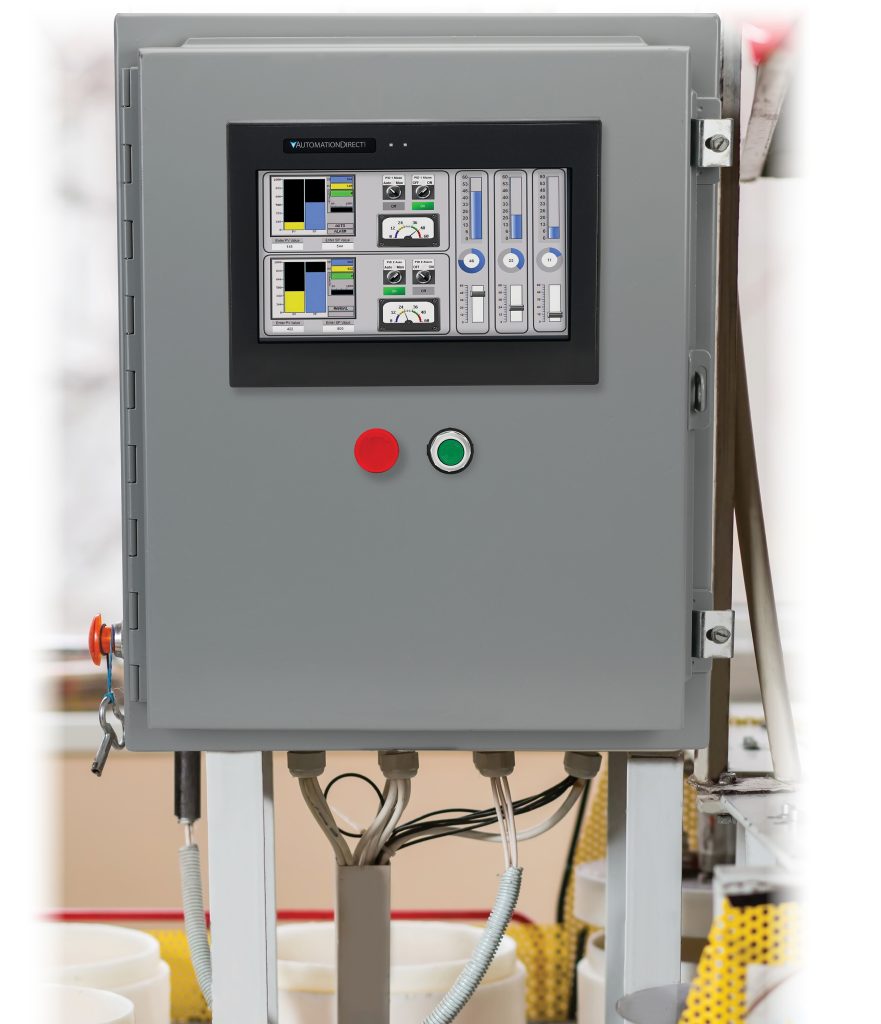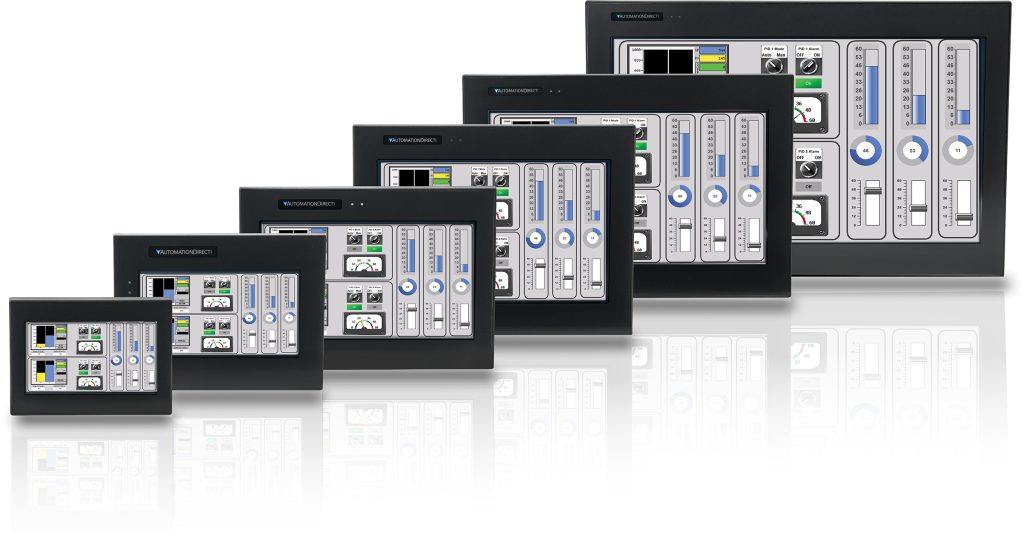A digital graphical human-machine interface is usually the best way for users to interact with any type of monitoring or control system, and industrial versions are specially designed to withstand challenging environments.
For practically every type of machinery or equipment ever put into service, there has been a need for some type of operator interface (OI) so users could monitor and control the apparatus. On the earliest mechanical machines, this took the form of levers, handwheels, and physical indicators. Once electrical controls became common, the OI consisted of pushbuttons, switches, lights, and similar pilot devices. But the arrival of electronics and digital controllers ushered in a new age of user interface (UI) capabilities.
Interacting Digitally
Digital OI/UIs are primarily recognized by the rich graphical visualization they provide to users, representing the equipment or process status. Sometimes they are view-only (like a typical automobile dashboard), but many versions (like the audio system in a car) include associated buttons, keyboards, or pointing devices—or more commonly touchscreens—so users can initiate actions.
Throughout the industrial and consumer product world, digital interfaces are now extremely common. It is important to note that while it may be acceptable to replace or upgrade consumer-grade devices on a regular basis, products used for industrial service typically are expected to last for many years, often decades (Figure 1)

Collectively, these digital graphical devices are called human-machine interfaces (HMIs), although they may also be referred to as operator interface terminals (OITs), touchpanels, touchscreens, or simply displays. The most fundamental HMIs are just view-only message displays. However, a graphical HMI is a more capable version, and it is what most people think of when they hear the term “HMI.”
For industrial applications, some graphical HMIs consist of dedicated hardware running mission-specific software, while others can be a PC hosting HMI software, or even a mobile device running a web interface or an app. PC-based HMIs usually are the most capable, and they’re often networked together to form a supervisory control and data acquisition (SCADA) system.
A few hardware-based HMIs are “headless” and don’t have any on-board screen. These devices use an HDMI or other cable to connect to an external display, or they may use a network connection to interact with remote PCs or mobile devices, like tablets and smartphones.
Tough Enough for the Factory Floor
For use in environments like a typical factory floor, at a machine, in the cab of heavy equipment, on board a ship, or outdoors at a pumping station, HMI devices must be built industrial-grade tough. There are industrial-rated PCs which can be installed in such environments. However, the remainder of this article will focus on dedicated industrial-grade hardware-based HMIs. These are typically available in a range of form-factors for installing in an enclosure door, on a console, or within a control panel (Figure 2).

Hardware-based industrial HMIs must often meet standards for:
- Vibration and physical durability: To resist equipment motion and rough use, and to fit into appropriate enclosures or consoles.
- Temperature: Both low and high.
- Environmental: Typically meeting/exceeding appropriate NEMA and/or IP ratings for liquids and other contaminants.
- Electrical: Carrying suitable UL and/or IEC ratings.
- Visibility: Displays need sufficient resolution, brightness, and colors to perform their function. Direct sunlight is a challenge for HMIs, and they are more viewable when installed in shade shelters.
The most basic touchscreen technologies support only single touch functions, but newer capacitive technology—like that used in smartphones—is becoming available on industrial devices, supporting functions such as expanding/contracting the viewing area. However, many industrial users must wear gloves which won’t work with capacitive displays, so more traditional technologies such as resistive may be required in some applications.
Selecting the Right HMI
Designers and specifiers need to consider many things when selecting an HMI, whether it is for a new “clean sheet” project or an upgrade of an existing legacy installation. With decades of experience supplying HMIs, AutomationDirect has put a lot of thought into designing the C-more CM5 series touch screen HMIs. Here are some key points regarding this HMI series:
- Selection: A concise yet comprehensive range of sizes covering small to large—including a headless version—with the ability to retrofit into existing cutouts where possible.
- Capability: Processing speed, memory size, display size/resolution, and other performance characteristics provide comprehensive visualization.
- Ease-of-use: Free software, with numerous tools and drag-and-drop options, simplifies the development, migration, simulation, and deployment of applications.
- Industrial internet of things (IIoT): Built-in cybersecurity provisions are the right answer to take advantage of the latest networking methods and communication protocols, such as HTPPS and MQTTS, in a secure fashion.
- Value: While the preceding technical points are of great importance, part of any HMI decision will always depend on a favorable price/performance ratio, an area where AutomationDirect is typically the industry leader.
Industrial-grade graphical HMIs are a key component of the industrial automation landscape. The AutomationDirect website features a wide range of HMIs and other industrial automation products, and informational resources such as specifications, documents/drawings, and videos. Support staff are ready to help you find the right application solutions to deliver maximum value and performance.

